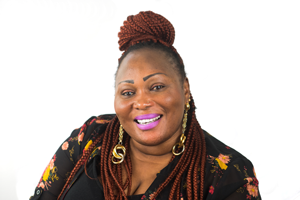Challenging HIV-related stigma and discrimination
 HIV stigma evolved from a mix of xenophobia and homophobia and has included profound fear, in the public mind, of sex workers, racialized people, and people who inject drugs. Dangerous misconceptions about HIV transmission risk have been perpetuated, and they have negative consequences for people who live with or who face systemic risk factors for HIV, including driving unjust criminal prosecutions.1
HIV stigma evolved from a mix of xenophobia and homophobia and has included profound fear, in the public mind, of sex workers, racialized people, and people who inject drugs. Dangerous misconceptions about HIV transmission risk have been perpetuated, and they have negative consequences for people who live with or who face systemic risk factors for HIV, including driving unjust criminal prosecutions.1
As service providers, we can use the U=U platform to provide assurance to people living with HIV regarding both their individual health and the health of their sexual partners. This encourages engagement across the HIV prevention, engagement, and care cascade.2 People are more likely to get tested if the stigma is reduced, they are more likely to disclose their status if they are on effective ART with an undetectable viral load, they are more likely to start treatment early and remain adherent to their ART, and they are more likely to remain in care.3
- AVERT. HIV stigma and discrimination. Brighton, UK: AVERT; 2018. Available from: https://www.avert.org/professionals/hiv-social-issues/stigma-discrimination [accessed June 20, 2019]
- The prevention, engagement, and care cascade reflects the different services someone with HIV needs to achieve optimal health outcomes, including HIV testing and diagnosis, linkage to appropriate medical care (and other health services), support while in care, access to HIV treatment, support on treatment, and the achievement of an undetectable viral load. CATIE. HIV in Canada: A primer for service providers. The HIV treatment cascade.
- UNAIDS. Confronting discrimination: overcoming HIV-related stigma and discrimination in health- care settings and beyond. Geneva: Joint United Nations Programme on HIV/AIDS; 2017. Available from: http://www.unaids.org/sites/default/files/media_asset/confronting-discrimination_en.pdf [accessed June 20, 2019].
